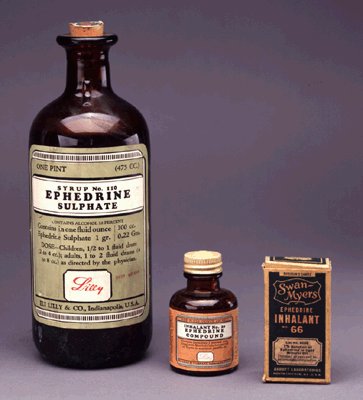File:EphedrineInBottles.jpg
EphedrineInBottles.jpg (363 × 400 pixels, file size: 26 KB, MIME type: image/jpeg)
File history
Click on a date/time to view the file as it appeared at that time.
| Date/Time | Dimensions | User | Comment | |
|---|---|---|---|---|
| current | 14:43, 5 October 2005 | 363 × 400 (26 KB) | Octavio L | ephedrine In 1887 Nagajoshi Nagai (18451929), a Japanese researcher working in Germany, isolated ephedrine as the active ingredient of ma huang but found the substance to be highly toxic. In the 1920s, Chinese pharmacologist Ko Kuei Chen (18981988) |
File usage
The following page uses this file:

